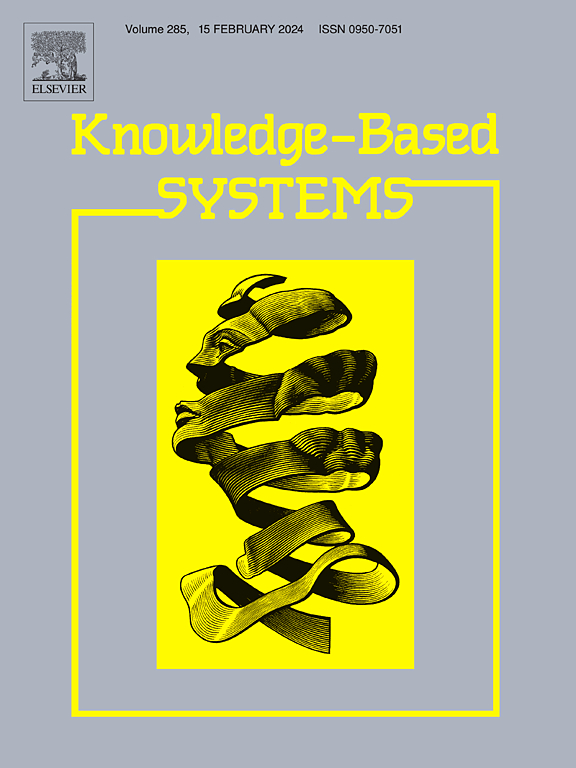Sharpening deep graph clustering via diverse bellwethers
IF 7.2
1区 计算机科学
Q1 COMPUTER SCIENCE, ARTIFICIAL INTELLIGENCE
引用次数: 0
Abstract
Deep graph clustering has attracted increasing attention in data analysis recently, which leverages the topology structure and attributes of graph to divide nodes into different groups. Most existing deep graph clustering models, however, have compromised performance due to a lack of discriminative representation learning and adequate support for learning diverse clusters. To address these issues, we proposed a Diversity-promoting Deep Graph Clustering (DDGC) model that attains the two essential clustering principles of minimizing the intra-cluster variance while maximizing the inter-cluster variance. Specifically, DDGC iteratively optimizes the node representations and cluster centroids. First, DDGC maximizes the log-likelihood of node representations to obtain cluster centroids, which are subjected to a differentiable diversity regularization term to force the separation among clusters and thus increase inter-cluster variances. Moreover, a minimum entropy-based clustering loss is proposed to sharpen the clustering assignment distributions in order to produce compact clusters, thereby reducing intra-cluster variances. Extensive experimental results demonstrate that DDGC achieves state-of-the-art clustering performance and verifies the effectiveness of each component on common real-world datasets. Experiments also verify that DDGC can learn discriminative node representations and alleviate the over-smoothing issue.
求助全文
约1分钟内获得全文
求助全文
来源期刊

Knowledge-Based Systems
工程技术-计算机:人工智能
CiteScore
14.80
自引率
12.50%
发文量
1245
审稿时长
7.8 months
期刊介绍:
Knowledge-Based Systems, an international and interdisciplinary journal in artificial intelligence, publishes original, innovative, and creative research results in the field. It focuses on knowledge-based and other artificial intelligence techniques-based systems. The journal aims to support human prediction and decision-making through data science and computation techniques, provide a balanced coverage of theory and practical study, and encourage the development and implementation of knowledge-based intelligence models, methods, systems, and software tools. Applications in business, government, education, engineering, and healthcare are emphasized.
 求助内容:
求助内容: 应助结果提醒方式:
应助结果提醒方式:


